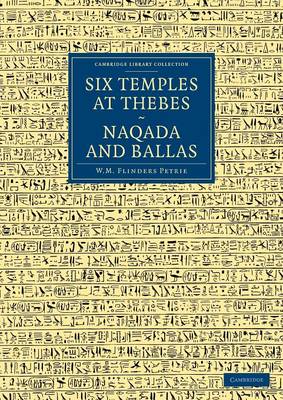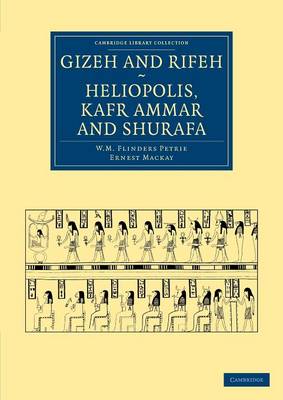Cambridge Library Collection - Egyptology
29 total works
Six Temples at Thebes, Naqada and Ballas
by Sir William Matthew Flinders Petrie and J. E. Quibell
Gizeh and Rifeh, Heliopolis, Kafr Ammar and Shurafa
by Sir William Matthew Flinders Petrie and Ernest Mackay
A History of Egypt: Volume 1, From the Earliest Times to the XVIth Dynasty
by Sir William Matthew Flinders Petrie
Naukratis I and II, Hawara, Biahmu, and Arsinoe
by Sir William Matthew Flinders Petrie and Ernest Arthur Gardner
The Arts and Crafts of Ancient Egypt
by Sir William Matthew Flinders Petrie
Deshasheh, Diospolis Parva, Athribis
by Sir William Matthew Flinders Petrie, Francis Llewellyn Griffith, and Arthur Cruttenden Mace
The Royal Tombs of the Earliest Dynasties
by Sir William Matthew Flinders Petrie
The Royal Tombs of the First Dynasty
by Sir William Matthew Flinders Petrie
Roman Portraits and Memphis IV, Tarkhan I and Memphis V, Tarkhan II
by Sir William Matthew Flinders Petrie
Memphis I, The Palace of Apries (Memphis II), Meydum and Memphis III
by Sir William Matthew Flinders Petrie



